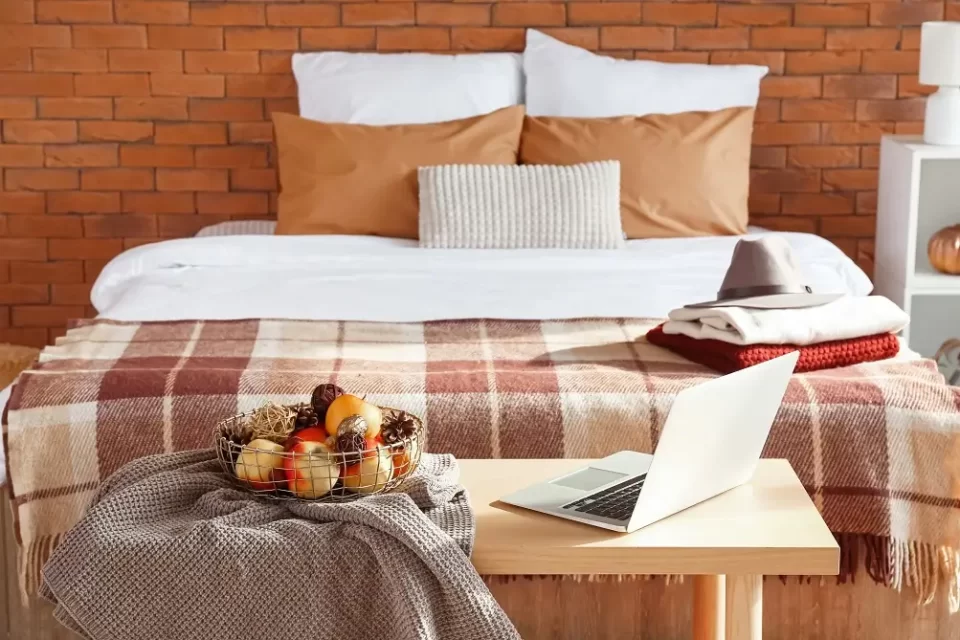Choosing the right wall colour combination that matches your furniture can enhance the beauty of your home. A well-balanced colour scheme creates a harmonious and visually appealing space.
However, selecting the perfect home paint colour combination can be challenging, especially when considering the different shades of walls and furniture styles. Here are some useful tips to help you create a beautiful and coordinated home interior.
1. Understand Your Furniture Style
Before choosing the colour of the wall, consider the type of furniture you have. Dark wood, light wood, upholstered, or metallic furniture each pairs well with different wall colour combinations. For example:
- Dark wooden furniture looks stunning with warm neutrals, beige, cream, or soft pastels.
- Light wooden furniture pairs well with earthy tones, light grey, and soft blues.
- Upholstered furniture in bright colours requires subtle wall shades like white, light grey, or pastel tones.
2. Choose a Balanced Colour Palette
A well-planned home paint combination ensures that your room looks elegant and inviting. Use the 60-30-10 rule:
- 60% Dominant Colour: This should be your wall colour, creating the room’s main tone.
- 30% Secondary Colour: This can be your furniture, adding contrast and depth.
- 10% Accent Colour: Use this for accessories like cushions, curtains, or artwork to bring the space together.
3. Selecting a Colour Combination for Your Wall Based on Room Type
Each room has a different function; the wall colours should reflect that. Here are some suggestions:
- Living Room: The ideal colour combination for living room includes neutral tones like beige, white, or grey, which complement various furniture styles. Consider soft pastel walls to balance the look of your furniture if it is vibrant.
- Bedroom: Choose calming tones like soft blue, lavender, or warm white to create a peaceful ambience that matches wooden or upholstered furniture.
- Dining Room: Earthy shades like mustard, terracotta, or olive green enhance wooden dining furniture beautifully.
4. Contrast vs. Matching Colours
- Matching Colours: If you want a monochromatic look, choose wall colours that are slightly lighter or darker than your furniture. For example, beige walls with light brown furniture create a soothing effect.
- Contrasting Colours: For a bolder look, select complementary shades. Dark furniture looks striking against light or pastel walls, while bright furniture pairs well with neutral walls.
5. Consider the Room’s Lighting
Lighting affects how colours appear in a room. Natural sunlight makes colours look brighter, while artificial lighting can create warm or cool effects. Always test a sample of your chosen home wall painting shade before committing to a full room makeover.
6. Incorporate Patterns and Textures
If you love patterns, choose subtle wall colours to complement patterned furniture. Similarly, textured wall paint can enhance the look of plain furniture. A textured accent wall in warm tones can add depth to a minimalist setting.
7. Experiment with Accent Walls
An accent wall can create a striking focal point in your space. If your furniture is neutral, choose a bold accent wall in deep blue, emerald green, or warm terracotta. If your furniture is colourful, keep the walls neutral and add an accent wall in a complementary shade.
8. Keep the Overall Theme in Mind
Ensure that your home paint colour combination aligns with your overall home theme. Whether you prefer a traditional, modern, or rustic look, the colours should work together to maintain a cohesive style.
Final Thoughts
Matching your home paint to your furniture enhances your home’s aesthetic appeal. You can create a harmonious and inviting space by understanding colour balance, lighting, and furniture styles. Take your time to experiment with different colour combinations for your wall and enjoy transforming your home into a stylish and comfortable haven.

